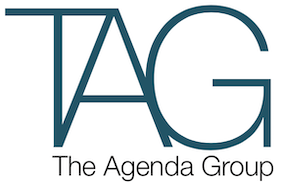Trade Ministers reaching agreement on the Trans-Pacific Partnership (TPP) has dominated news this week, and for good reason. It’s a big deal.
The New York Times reported this week that the 12 Pacific Rim countries negotiating the pact account for around 40 per cent of annual GDP and one-third of world trade.
The TPP is the most significant trade pact since the signing of the North American Free Trade Agreement (NAFTA) in 1994. While Australia didn’t feature in NAFTA, (though some key provisions were replicated in the 2004 AUSFTA) the TPP is an enormous opportunity for Australian businesses wanting to trade across Asia Pacific.
There is already widespread criticism of the TPP despite the negotiations and text mostly remaining secret. Wikileaks published some material which has concerned environment groups, privacy rights advocates and labour unions.
Australia’s Department of Foreign Affairs and Trade has released a TPP overview which describes a number of benefits for Australia: 
- Access to new markets: Australia does not have free trade agreements with three of the current TPP negotiating parties (Canada, Mexico, Peru).
- For exporters of goods: TPP Leaders are committed to the elimination of tariffs on goods.
- For service providers: Australia is pushing for a reduction of barriers faced by services exporters.
- For investors: The TPP will create new opportunities and provide more transparent rules for Australian investors in TPP countries.
So will the TPP get the go-ahead?
Firstly, an Australian perspective:
Australians will be off to the polls in the next 12 months and the Minister for Trade and Investment Andrew Robb, who has been at the forefront of negotiations, will hardly be asking Australians to accept more losses than wins from the TPP on the eve of an election.
The Federal Opposition has given qualified support pending the agreements release, but it is based on an assurance that the price of pharmaceuticals will not increase. It would seem inconceivable that the Federal Government would sign an agreement that actually increases the cost of medicines just before asking voters to return them for a second term.
The Opposition has also indicated that it “opposes the inclusion of Investor State Dispute Settlement (ISDS) provisions in all trade agreements, and will carefully scrutinise relevant provisions in the TPP…”
Higher prices for pharmaceuticals might be a deal-breaker for the Federal Opposition, but including ISDS provisions does not appear to be.
So the prospect of Australian ratification is looking good.
Secondly, and more importantly, the real stumbling block is the United States. President Obama is committed to ratifying the agreement before the November 2016 election, he wants it done and dusted, a key plank of his economic legacy.
Influential, and increasingly popular, candidates Bernie Sanders (Dem) and Donald Trump (Rep) have come out vehemently opposing the TPP. Their language is strident and uncompromising, and consistent with their record. It’s now biting with other candidates.
Democratic Presidential candidate Hillary Clinton has already come out opposing the TPP despite previously backing free trade deals, but she’s not in government and wanting to be elected.
So she leaves some considerable wriggle room when she says “as of today, I am not in favour of what I have learned about it.”
Clearly, Obama is going to have to do all the heavy lifting on this one.
While the TPP is very much a trade and economic development policy document, the politics of the agreement will dominate for the next 12 months and it is the politics of the 2016 Presidential election that will ultimately determine the fate of the TPP.
